See details
READ MORE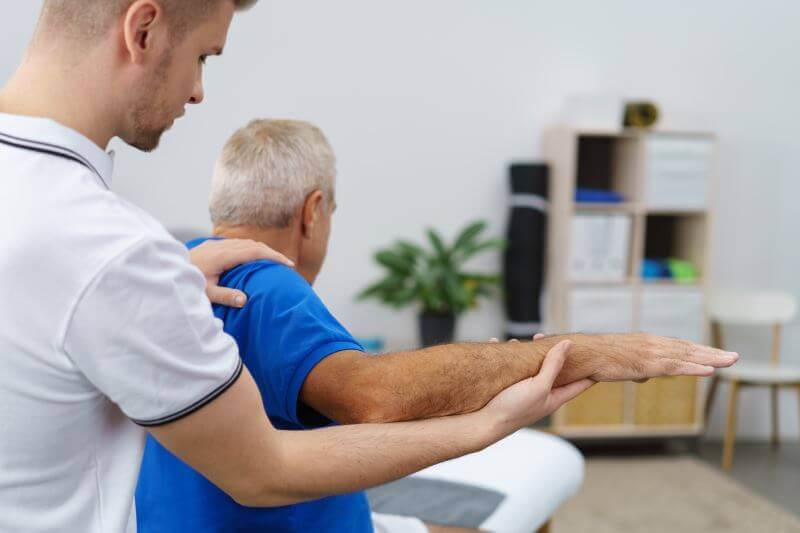
Recovery protocol after tenorrhaphy of the long head of the brachial biceps
The brachial biceps muscle crosses both the shoulder and the elbow joint and is responsible for elbow flexion and forearm supination. Effective rupture of muscle fibers is extremely rare and uncommon.The ability of muscle fibers to generate tension and contractions after an untreated rupture is approximately 50% and 66% after reconstruction (complete rupture has a reserved prognosis).
Causes
More than 50% of brachial biceps muscle ruptures occur in the proximal tendon (long head). This rupture occurs when lifting a weight greater than or equal to 68 kg (the high weight required to rupture the tendon is approximate, taking into account its strength). The rupture is more or less transverse and is located either at the level of the intraarticular portion or in the proximal part of the intertubercular groove. Most ruptures occur at the muscle-tendon junction or the fixation on the scapula.Surgical treatment
At the level of the bicipital groove, a 1.5 cm long hole is made, where the proximal end of the tendon is passed, in order to suture it. Postoperatively, the patient is immobilized in the scarf for a few days, the resumption of active movements being done as soon as possible. For athletes, the recovery time is 12 weeks. Most techniques involve fixing the muscle heads with special anchors.Rupture or avulsion of the long tendon of the brachial biceps
A total rupture is easy to identify even without performing clinical trials. A clinical test is similar to the Thompson test for the Achilles tendon (the patient sitting, with the elbow flexed between 60 and 80 degrees, the examiner fixes his hands on the brachial biceps, respectively one on the musculotendinous junction and the other around the muscle belt; by contraction, muscle ascends). Lack of forearm supination is a clear sign of tendon or muscle rupture. To elucidate the diagnosis, the patient undergoes an MRI examination.
Surgical treatment is the elective treatment and consists of reattaching the tendon to the radial tuberosity with the help of anchors. Postoperatively, the elbow is immobilized in flexion at 110 degrees, the forearm in moderate supination, 3 weeks, after which the active movements begin (recovery). Total mobilization is possible at 6-8 weeks, total recovery, somewhere at 12 weeks.
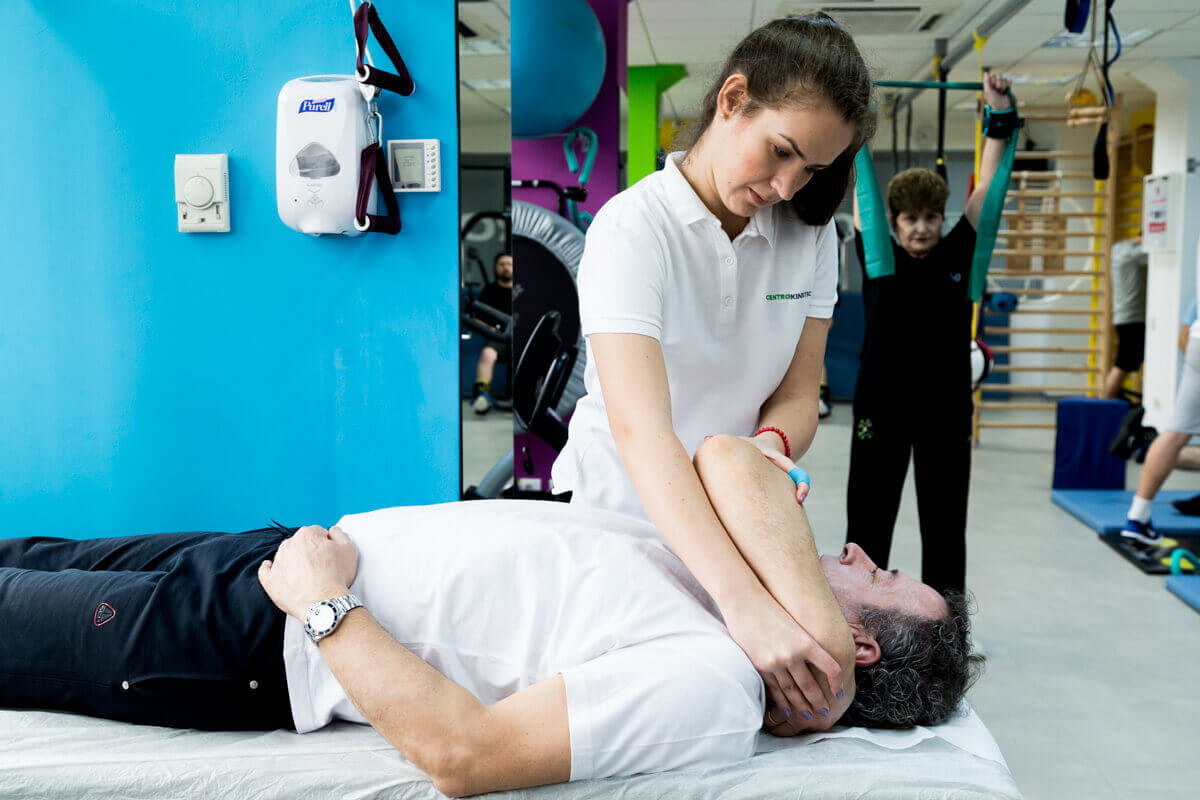
Rehabilitation protocol
Phase 1: Weeks 1 - 3In the first postoperative week, the patient will have the operated limb immobilized in an elbow splint, which he will wear permanently. After the first week, the patient will wear an elbow splint or an elbow orthosis, locked at 90 degrees. The orthosis can be removed or unblocked to allow the first recovery exercises to be performed.
Clinical purposes
- The range of elbow movements from 30 degrees of extension to 130 degrees of flexion
- Maintaining the swelling of the elbow in the parameters and favoring the healing of soft tissues
- Obtaining a complete pronation/supination movement
Exercises
- The patient should perform passive movements from 30 degrees of extension to 130 degrees of flexion 5-6 times a day, in sessions of 25 repetitions.
- Apply ice after the exercise session
- Always perform active shoulder movements

Phase 2: Weeks 3 - 6
Clinical goals
- Complete movements of the elbow joint at 6 weeks
- Strengthening of the grasping movement at 4-6 weeks
- The active extension will be limited to 20 degrees. Passive flexion can be complete, within tolerance. The orthosis will be worn permanently, except during exercise
- Active flexion / extension of the fist
- Active hand movements in a neutral position
- Active prone / supine movements
- The active extension will be limited to 10 degrees
- Continue the exercises in week 3
- Use a ball 3 times a day to increase your grip strength
- Exercises on the trellis with the arm of the operated limb supported by the healthy one
- Pulley exercises with limiting the extension to 10 degrees.
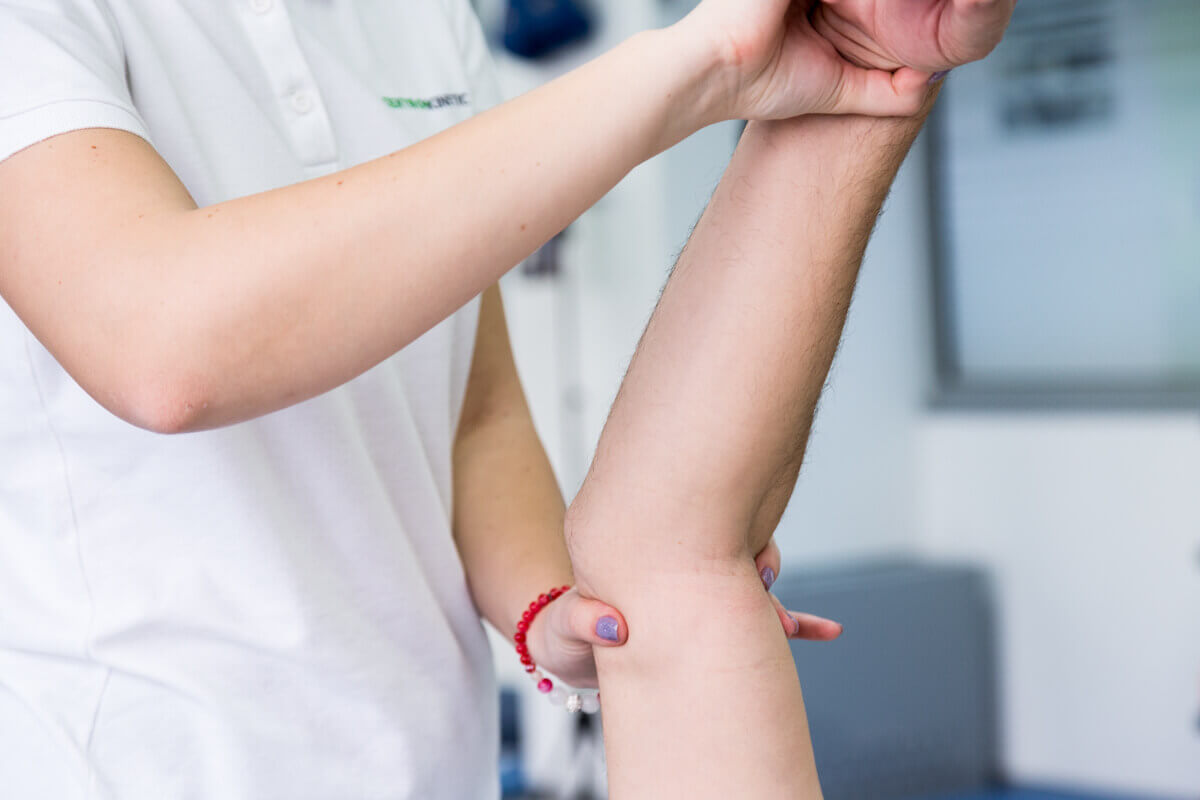
Week 5:
- A full active extension is allowed
- The orthosis is still used, being worn for 6 weeks
- Stabilization exercises of the scapular belt with the hand in supination, without weights
- Ball movements counterclockwise
- At the end of the 6 weeks, the immobilization in the orthosis is no longer needed
- Passive elbow extension exercises can be started
- Start strengthening exercises with weights of 1kg for flexion / extension / forearm rotation and flexion / extension of the fist
- Start strengthening shoulder exercises with Theraband
- Stabilization exercises of the scapular belt with the hand in supination, with weights of 1 kg
- Ball throwing exercises
- Ice after each strengthening exercise session
Patients are usually seen one week postoperatively, then 5-6 weeks postoperatively. The final visit takes place at 12 weeks.
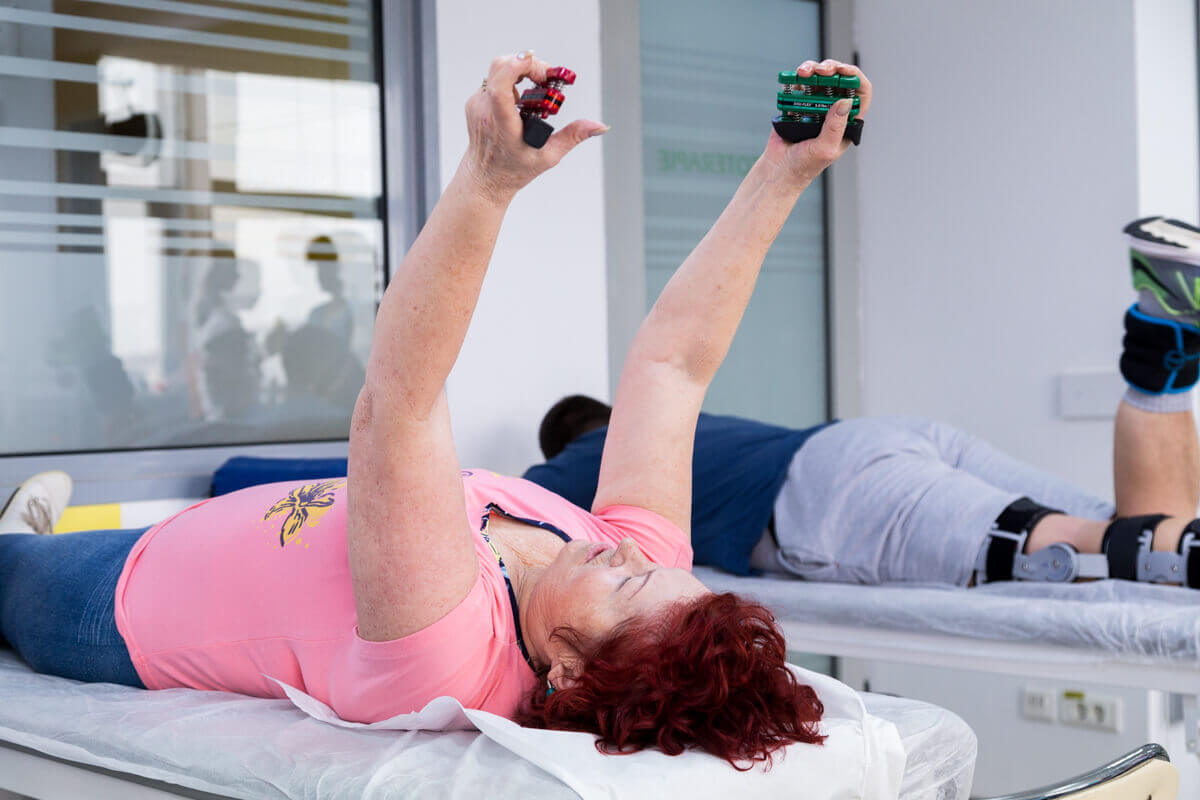
Phase III: 6 weeks - 6 months
Clinical goals
The strengthening program is gradually increased so that the patient can use his operated limb at full capacity at the end of the 6 months of recovery, regardless of work or sport.
Exercises
- Exercises to regain full range of motion in case it is limited
- Strengthening exercises of the hand, forearm, and shoulder, depending on the needs of the sport practiced / service
Clinical follow-up
The patient is seen whenever necessary for monitoring and supervision of the strengthening program.
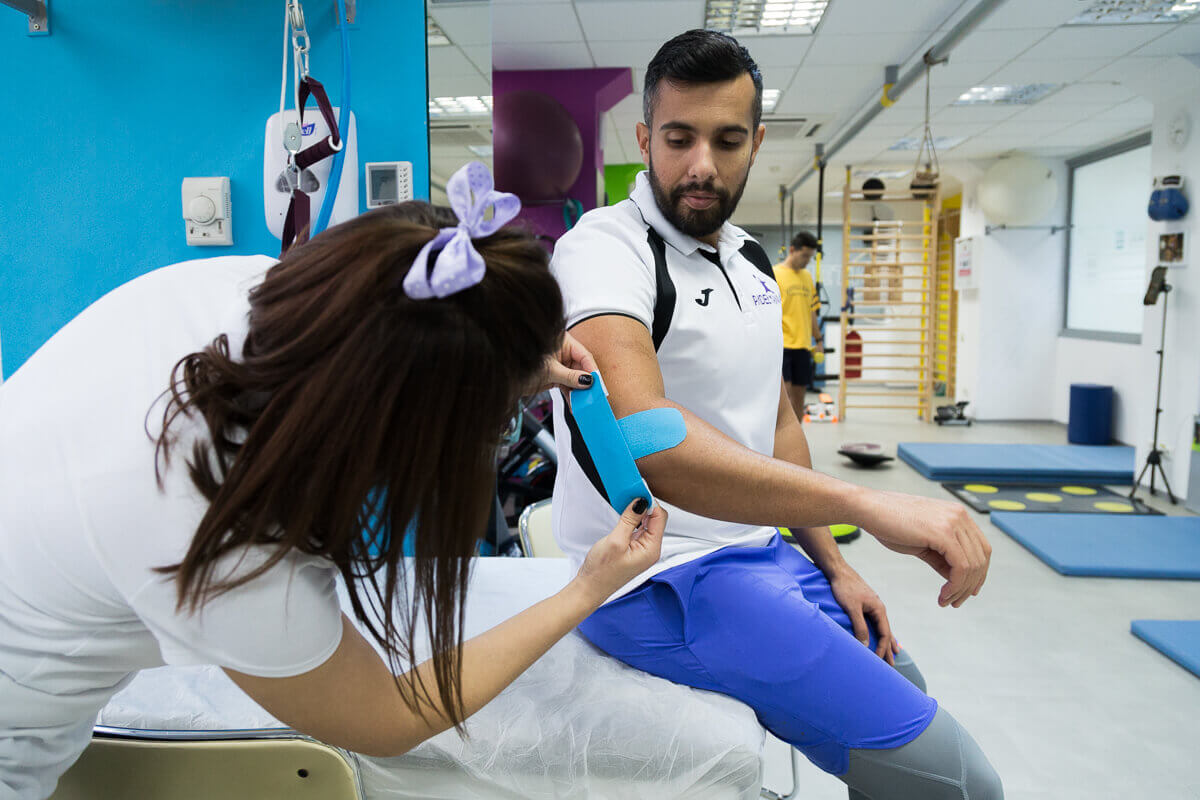
Graft Reconstruction
The program is delayed when a graft is used for tendon reconstruction. The patient is immobilized in an elbow splint with the elbow at 90 degrees and the forearm in a neutral position for about 7 days.
At 7 days postoperatively
- Plaster immobilization is suppressed and replaced with an elbow orthosis locked at 90 degrees
- Passive bending up to 90-150 degrees is allowed. Complete flexion is allowed but is dependent on pain
- Passive exercises are performed twice a day, in 25 repetitions
- Passive extension is allowed up to 30 degrees after one week postoperatively
Weeks 3 - 6
- Passive movement begins
- Avoid full extension until 6 weeks have passed since surgery
Weeks 6 - 12
- Movements of daily activities are allowed
3 - 6 months
- The operated limb can be operated on for current activities, depending on the pain.
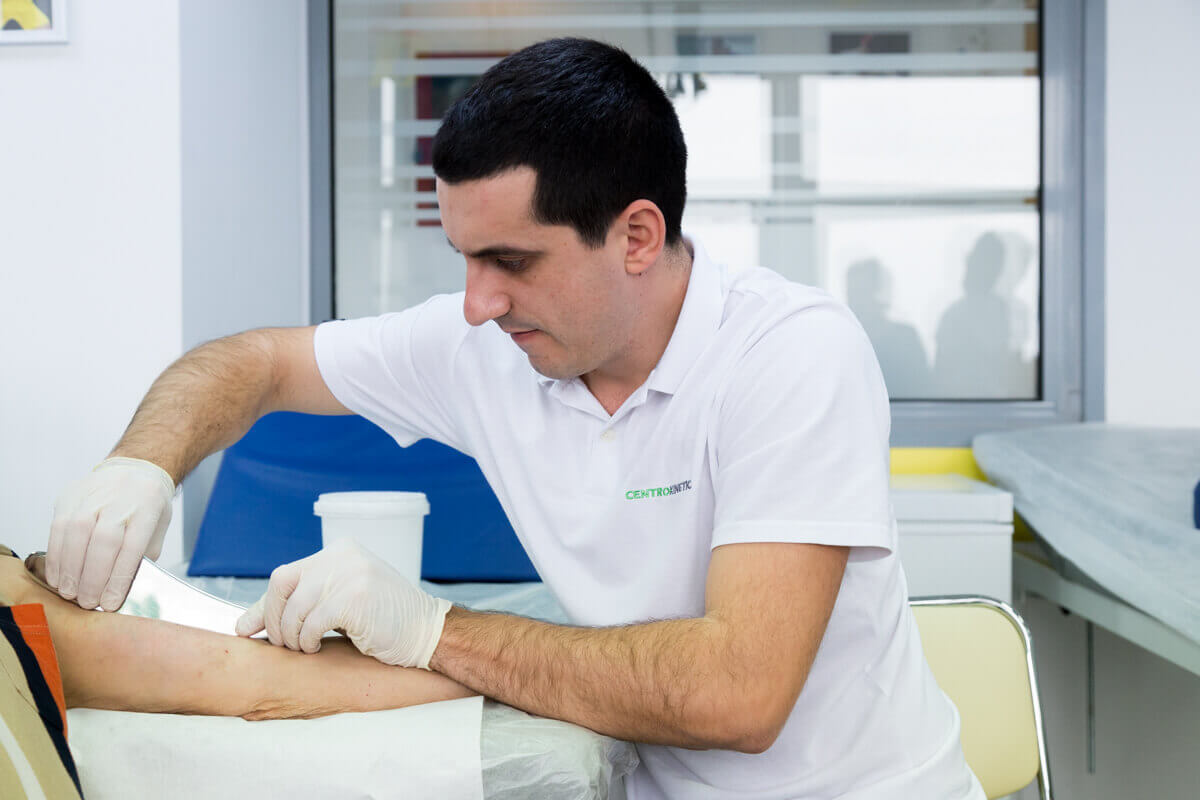
NB: All progressions are approximations and should only be used as guidance. Progression will be based on the individual condition of the patient, which is assessed throughout the treatment process.
SUCCESSFUL RECOVERY STORIES

MAKE AN APPOINTMENT
CONTACT US
MAKE AN APPOINTMENT
FOR AN EXAMINATION
See here how you can make an appointment and the location of our clinics.
MAKE AN APPOINTMENT




































































































































